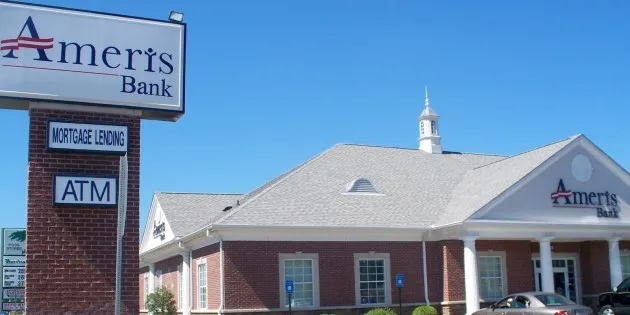High-yield savings accounts offer a smart way to grow your savings with minimal effort. Unlike traditional savings accounts, high-yield options provide a much higher interest rate, allowing you to earn more on the money you deposit.

A high-yield savings account can help accelerate your savings, especially for anyone who is hoping to grow his/her finances or save for a long-term or short-term goal.
What Are High-Yield Savings Accounts?
As the name suggests, a high-yield savings account is a form of savings account that is associated with an interest rate that is particularly higher than the common rates offered by most savings accounts.
Some nationally available basic savings accounts are currently yielding around 0.05% APY, while high-yield savings accounts offer, roughly 10 times that amount, with yields ranging between 1.5% and 4% depending on the market and bank.
It is common for such accounts to be provided by Internet banks or credit unions because their overhead expenses are generally lower than those of traditional ‘physical’ banks, thus they can afford to offer better conditions in terms of higher interest rates.
The high-yield savings accounts are a perfect place to deposit your emergency funds or funds you wish to achieve a short-term goal, including putting your money in the account.
This also allows it to grow at a rate that is higher than that of a normal savings account with minimal risks involved.
Why Are High-Yield Savings Accounts Important?

High-yield savings accounts are important because they maximize the earning potential of your savings without the risks associated with investing in the stock market. Here’s why high-yield savings accounts can make a big difference in your financial strategy:
1. Earn More Interest
With a traditional savings account, you’re likely earning a very small amount of interest, often not enough to even keep up with inflation. High-yield savings accounts, however, offer a much higher return on your deposits, allowing your savings to grow over time.
This can be particularly useful for emergency funds, travel savings, or any other financial goal that requires liquidity.
2. Keep Up with Inflation
Inflation erodes the purchasing power of your money over time. If your money is sitting in a low-interest savings account, you may be losing value because the interest you’re earning doesn’t keep up with inflation.
A high-yield savings account helps counter this by providing a rate that, in some cases, exceeds inflation rates, helping preserve the real value of your money.
3. Liquidity and Accessibility
Unlike investments such as stocks or bonds, which may take time to convert to cash, money in a high-yield savings account is readily accessible. Most high-yield accounts allow you to transfer funds to your checking account within a day or two, making it easy to access your money in case of an emergency.
4. Minimal Risk
While the stock market can provide high returns, it also comes with significant risk. A high-yield savings account, on the other hand, is a virtually risk-free way to grow your money. Since these accounts are typically insured by the FDIC or NCUA up to $250,000, your funds are protected in case the bank or credit union fails.
5. Flexible Savings Goals
High-yield savings accounts are ideal for both short-term and long-term savings goals. Whether you’re saving for a down payment on a home, building an emergency fund, or preparing for a major purchase, a high-yield account allows you to reach your goals faster while keeping your money safe and accessible.
Ways to Maximize Your High-Yield Savings Account

If you’re considering opening a high-yield savings account, there are several strategies you can use to make the most of this financial tool, which include:
1. Shop Around for the Best Rates
High-yield savings accounts aren’t created equal. Depending on the bank or credit union you go with, the interest rates will differ, and so too will the APY so it will be to your advantage to compare these as well.
Savings accounts offered by online banks may have the best rates, so it is worth signing up with one if you’re in the market for the best deal.
2. Keep Your Balance Above the Minimum Requirement
Most high-yield savings accounts come with a provision that you need to maintain a particular balance to be able to attract the stated APY.
Always ensure that your account balance is way past the required minimum to earn you some interest. If you are in a position to do so, try to save more than the minimum so that your money grows even faster.
3. Automate Your Savings
Set up automatic transfers from your checking account to your high-yield savings account. This way you are guaranteed to be continuously putting more money into your savings without necessarily having to focus on it.
May small amounts should be saved regularly so that more amount can be saved by a certain point in time.
4. Avoid Excessive Withdrawals
Most high-yield savings accounts allow only a specific number of withdrawals per month (typically, six). It may also attract a fee or grant the cardholder a lower interest rate if this limit is overlooked.
To this end, you should only deposit money in your high-yield savings account for your savings and avoid withdrawal frequently or for trivial reasons.
5. Use It for Your Emergency Fund
A high-yield savings account is the best place to have your emergency fund well tucked in a bank. The money will be easily accessible when need be and on the other hand, it will be earning you more interest than you would normally expect from a normal saving account.
6. Link It to Your Checking Account
Linking a high-yield savings account to a checking account is referred to as swelling, which means the ability to transfer cash from a checking account to a high-yield savings account.
Often such transfers can be arranged so that you can withdraw the money if required so that most of the money will be invested in the high-interest earning account.
7. Reinvest Your Interest
Most high-yield savings accounts will even compound the interest you earn, meaning that instead of paying it to you, the interest earned will be reinvested to further compound when you deposit more money.
Ensure this is the way your account is configured because it can expand your profits massively.
8. Monitor Your Account Regularly
Though the idea behind high-yield savings accounts is to have little to no involvement, it is recommended to keep track of your account continually.
Make sure you get the right interest rate on the balance and be vigilant for the change in the terms and fees. Being vigilant on your accounts, allows you to get the best out of your hard-earned contributions.
Fees Associated with High-Yield Savings Accounts
One common concern about high-yield savings accounts is whether they come with fees that could eat into your earnings.
The good news on this front is that most of the online banks and credit unions that offer high-yield accounts also have relatively low fees, but it is still critical to know what fees are possible. Some of the potential fees to look out for include:
1. Monthly maintenance fees: Certain accounts make it so that if your balance is low, they will deduct a fee away. Ensure that you do not spend a figure below this minimum to avert unnecessary costs.
2. Excess withdrawal fees: Some high-yield savings accounts can only allow you to make a limited number of transfers in a given month to another account held in the same institution.
Going beyond these is another charge, which is a flat or range charge between $5 and $15 per withdrawal.
3. Transfer fees: Some banks charge a fee for transferring the funds between their accounts and/or sending the money to an account in another bank. Remember to find out whether your bank will charge you for these transactions.
That frees up your thought process from worrying about fees so that you can consistently select a high-yield savings account with low to no fees involved and fully understand the terms to optimize the interest.
Conclusion
High-yield savings accounts are still highly effective when it comes to helping you build your savings big and fast but with less risk.
They pay more interest compared to the standard accounts and allow you to earn the most on your money while it is still liquid to cater for daily or any type of emergency.
Whether you are assembling an emergency fund, planning for a large purchase, or simply seeking to store your money more effectively, a high-yield savings account is one of the very best choices offered for cost savings.
Following the recommendations, you will be able to fully capitalize on the opportunities offered by a high-yield savings account and watch as your money compounds effortlessly.





